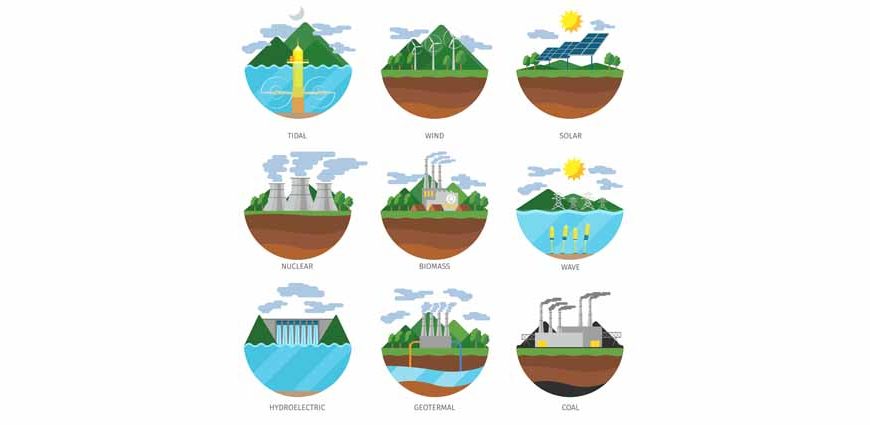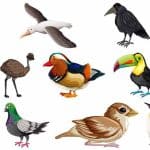“A natural resource is something that is found in nature and can be used by people. Earth’s natural resources include light, air, water, plants, animals, soil, stone, minerals, and fossil fuels. People need some natural resources to stay alive. They use others to make their lives better.”
– Kids Britannica
Natural resources are materials and substances that are naturally available in the environment. They are crucial in sustaining and fostering economic growth. These resources are extracted from the Earth and from different ecosystems. They are classified as renewable and non-renewable resources. It is essential for kids to know the types, importance and benefits of natural resources to be aware of the possible potential of the environment to produce goods. Further, understanding natural resources also helps kids recognise the need for conservation. In this article, we are going to cover the two types of natural resources, highlight five crucial ones, and understand the significance of these resources to produce food, shelter, clothing, solar power, medicine, employment, economic growth and cultural identity.
Table of Contents
1. What are Natural Resources?
2. Types of Natural Resources
3. Differences between Renewable and Non-Renewable Resources
4. Important Natural Resources
5. The Importance of Natural Resources- 5 Key Factors
6. Conclusion
What are Natural Resources?
Natural resources naturally occurring materials or substances that are essential for economic growth and sustenance of life. These resources are extracted from earth and various ecosystems like air, water, land, minerals, forests and wildlife. Most importantly, efficient and sustainable management of natural resources is important to ensure its availability for future generations.
Did you know that explaining the significance of natural resources can instil a seed of sustenance and mindful living in children? They might also become innovators in natural resources if you tell them the importance.
Types of Natural Resources
Do your kids know about the categories of natural resources? Here are the types of natural resources that our abundant earth provides:
1. Renewable Resources
These vital resources are either always available, like Water and Air, or can be recovered in a reasonable amount of time, like Vegetative Lands.
Note: Animals can also be portrayed as renewable resources, since they can produce young ones that replace the older animals.
Renewable resources are broadly classified into two types:
a. Organic Renewable Resources. These resources originate from living things like Trees and Animals.
b. Inorganic Renewable Resources. These resources originate from non-living things. Examples are Water, Sunlight and Air.
2. Non-Renewable Resources
Simply put, these are the natural resources that, when finished, cannot be supplanted again. That is why creatures that are on the brink of annihilation, are viewed as non-renewable resources.
Non-renewable resources, like their renewable counterparts, are divided into two categories.
a. Materials that come from living things. For example, Petroleum Products.
b. Materials that come from nonliving things. For example, Rocks and Soil.
These are the two important types of natural resources.
3. Biotic resources
Biotic resources are renewable living resources that can be restored over time. However, if they are overused or carelessly managed, they can be exhausted and take longer time to recover. Examples of biotic resources include forests, animals, plants, bacteria, fungi, and genetic resources.
4. Abiotic resources
Renewable Abiotic resources are non-living resources that can be depleted naturally, but not immediately when used. These resources are derived from the physical environment and not from living organisms. Most of the abiotic resources are renewable such as sunlight, wind, and water.
5. Flow resources
Flow resources are renewable natural resources that are continuously available or renewed by natural processes. They are not exhausted when used but may vary in availability over time. Examples of flow resources include solar energy, wind energy, water from rivers.
6. Potential resources
Non–renewable potential resources include those resources which are available but are not in use or are not explored fully. Some of the potential resources like the buried fossil fuel resources are labelled as non-renewable resources because the probability is that once they are extracted, utilised, and consumed, they shall not be restored. Examples of potential resources include hydrogen fuel, undiscovered oil reserves and deep-sea reserves such as manganese nodules and cobalt rich crusts.
7. Stock resources
Non-renewable stock resources are those resources that have taken a long geological period to form. Once they are exhausted they cannot be refilled within a human lifetime. Examples include coal, oil, natural gases and minerals such as iron, copper, and gold among others.
Differences between Renewable and Non-Renewable Resources
| Renewable Resources | Non-Renewable Resources |
| Can be recharged naturally within a short period | Cannot be recharged or could take millions of years to form |
| Renewable and can be used persistently if managed properly | Finite and will eventually be exhausted |
| Examples include solar, wind, hydro, geothermal, and biomass energy | Examples include fossil fuels (coal, oil, natural gas) and minerals |
| Cleaner and have a reduced environmental impact | Can often cause pollution and contribute to climate change when used |
| Reliant on geographical location and weather conditions | Can be transported and preserved for use anywhere |
| Abundant and widely available in nature | Scarcity increases as resources are depleted |
Important Natural Resources
Now that you have sufficient answers to the question, ‘What are Natural Resources?’, here’s a look at the most important of those precious resources.
1. Air. Air is one of the crucial natural resources for all beings to exist on this planet.
2. Water. You might know that 70 percent of the earth’s surface is covered with water. But did you know that only 2% of it is water that we can drink (Freshwater?)
3. Forests. We need to stop cutting trees, if we are to get an abundant supply of clean air. Indeed, air is essential for Life itself!
4. Soil. There’s more than meets the eye, when it comes to soil we nonchalantly trudge on, every now and then. Plants would not grow without it which makes it one of the essential natural resources types.
5. Iron. We wouldn’t have all our powerful vehicles and structures, without this important mineral.
The Importance of Natural Resources- 5 Key Factors
We all have a rough idea of the Benefits of Natural Resources. However, do we have a complete knowledge of the Importance of Natural Resources?
Presenting a list of Benefits of Natural Resources, that will show you just how much they contribute to an enhanced Quality of Living.
1. Food, Shelter, Clothing
All human beings need sources of food and water, to survive. Resources like forests provide us with things like fruits from trees, and meat from the animals that live there. Natural resources like lakes, are essential for providing us with Clean Drinking Water, without which none of us would be able to survive. Moreover, wool, wood, cotton, cocoons, coal and petroleum are some of the resources used to prepare clothing. In the present day, eco-friendly resources such as organic cotton, hemp and bamboo are other types of natural resources that are used for clothing.
Without natural resources like wood or metal ores, we wouldn’t be able to build houses. Neither would we be able to make tools like axes that are used for hunting. Therefore, the significance of resources is manifested through the availability of food, shelter and clothing for human beings.
2. Solar Power
Solar Panels depend on sunlight in order to generate electricity. Needless to say, without the Sun there would not be any sunlight. The very fact that solar energy makes for a renewable natural resource, makes for a huge benefit for mankind. Moreover, the significance of resources can be evident from the efficiency of energy solar power offers.Cool Fact: An hour of sunlight supplies enough electricity for every human on Earth, for an entire year!
3. An Important Source of Medicines
All of us have taken some sort of medicine at some point or the other in our lives. Medicines like Antipyretics (the drugs used to bring a fever down) are derived from plants. Yet other drugs like Morphine, come from the Opium Poppy.
Cool Fact: Medicines like Antibiotics and Anesthetics were first discovered in bacteria that was found on plants.
4. They Provide Employment to Millions
Industries like Agriculture, Manufacturing and Energy Production, all rely heavily on natural resources. It is in the availability of these very resources that has a direct impact on the employment of millions of people across the globe.
Construction companies serve as a prime example of the many industries that benefit from the use of natural resources. For instance, they need resources like Sand and Wood, to build houses. When it comes to agricultural companies, they need the vital resource of Land, in order to plant crops.
5. They Contribute to Economic Growth
A large number of countries export natural resources in order to generate foreign exchange earnings. They can use these earnings in order to import food and other essential goods, for the most basic needs of their populace.
The extraction of natural resources also gives a great boost to the economies of many developing nations. That is why you will see that in many developing countries, several people migrate from rural areas, to find work near urban centres. All so that they can feed their families back home!
6. They are an Important part of our Culture and Identity
The importance of natural resources extends well beyond their practical benefits. In some cultures, natural resources are even part of their spiritual beliefs. For example, the Aboriginal people in Australia believe that their land is a gift from their ancestors, and it is their responsibility to take care of it.
Natural resources have also been used by many cultures to do things like the following:
o Building houses from raw materials found in nature.
o Making pottery from clay found on land.
o Making weapons from rocks.
o Making clothes from animal skins.
Conclusion
Natural resources form the treasure of human existence and living. Kids need to know about natural resources and its uses. Children must also understand the implications of not conserving resources and be encouraged to think of various ways to conserve resources. On that note, we have provided categories of natural resources and the significance of natural resources. We hope to have answered your questions on using natural resources for your children.
At EuroKids we believe that empathy is a trait that should be inculcated in children for all living things. To do that, they must first start caring for the world they live in. We encourage you to help them understand just how important natural resources are. After all, they are the future generation that will take care of our Planet Earth.
For informative and accurate articles on all things related to your new born-toddler’s development, growth, health and nutrition, follow EuroKids Blogs and do check out our nationally recognized preschools – EuroKids for the first step in your kid’s educational journey!















